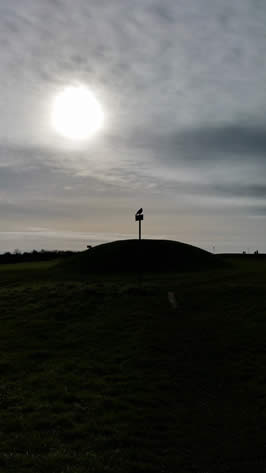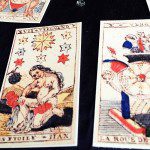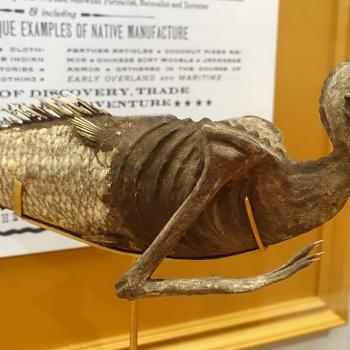We are moving into what is usually the coldest part of winter in my area, right before spring starts to noticeably thaw the world around me. From one perspective we might say this is when the Cailleach Bheur, the Goddess often associated with the storms of winter in Scotland, is most active before she goes to her rest on Là na Caillich [the Cailleach’s Day; March 25th]. From another point of view we might say that this is when the Winter Court¹ of the fairies holds sway. As I watch the snow fall, and think about these things, I find myself contemplating the wisdom I have learned from the darker Fey.

Myth and Mysticism
There are, of course, the more formal tenets and guidelines of the religions I practice including Druidism that shape my ethical and practical beliefs. In that context I look a lot at the older Irish wisdom texts like the Audacht Morainn [Testament of Morann] and Tecosca Cormaic [the Instructions of Cormac] because they contain some good guidelines to live by. I also have ethics defined by the witchcraft I practice, which are based more on what can be gleaned from myth and folklore dealing with the Good Neighbors. Looking at these stories and advice from the myths is very helpful to me in forming a system of ethics that I feel is inline with my spiritual beliefs and also more generally provides ideas for right-living, that is for living in right relationship with the world around me.
However my spirituality has always been as much about mysticism as it is about study, which I think befits anyone who uses a Reconstructionist methodology² – we need to have our feet firmly on the ground while our heads are lifted into the skies, as it were. For me the mysticism aspect plays out in the way that I use spiritual techniques to connect to my Gods and to other spirits; often these connections provide levels of communication. Sometimes this plays out in dreams, other times in more direct methods like meditation, but the ultimate point is that it makes me feel like I am actively engaging with the Powers that I honor. It also sometimes offers me the opportunity to gain new insight or wisdom into situations or life in general that I have found invaluable.

Listening to Messages
Since we are in the midst of winter, the time that is ruled over by the more dangerous Otherworldly beings, and I am finding myself thinking of some of the pieces of wisdom they have taught me over the years I thought perhaps I would share some of them here. Naturally some of these will be truisms but I have found them important and profound. These little tidbits conveyed in different experiences are things that have stayed with me and grown to shape how I interact both with other people and with spirits.
- Nothing’s nature is truly set, all things can be either fierce or gentle. – this was told to me by someone who might be termed a guide. I was struggling with an ingrained view of spirits as either good or bad, at the time, and this came in a larger context of a discussion about the way that even beings that seem meek can fight to defend themselves and even beings that seem aggressive can be kind. It ended up changing my entire view on things, and breaking me out of an either/or mindset.
- External beauty is an illusion, trust the beauty inside a thing if you would use that as a judge – we see a lot of emphasis in stories on physical beauty as a reflection of inner goodness, and I honestly expected the Fey Folk to have a similar opinion on the subject, but for what its worth in my own personal gnosis I was told that external appearances are fluid and untrustworthy. Only the qualities within can or perhaps should be used as a measure. This dovetailed with something else I’d gotten in a separate experience, that I shouldn’t use human standards of beauty, ability, or character as a measure for anything else. It basically boiled down to ‘humans aren’t the measuring stick for all sentient beings‘.
- Good manners are the line between earning blessing and earning grief. – This one applies to every interaction we have I think, but especially in the context of the Other Crowd. Being polite is at the least the best way to begin interactions. Often enough with the Fey Folk politeness will gain a better outcome even in a difficult situation than rudeness, while rudeness has consequences.
- Nothing comes without a cost – This was advice given to me in the context of being careful not to assume that something which looked good and beneficial to me didn’t have any hidden catch to it. Effectively the fairy version of always read the fine print, but I’ve found it a good motto to live by. With rare exceptions Gods, spirits, humans, they all expect something in return for something. Knowing that means not (hopefully) making any bad bargains or accidently writing any metaphorical blank checks. It may sound cynical but truly it isn’t it just means knowing that everything has a value and I need to know going into a situation what that value means to me, what I am willing to pay for something. Or not, as the case may be.
- Always know the measure of your own strength – This falls into the good advice given in a dream category, but it has served me well in life. It’s probably not surprising that this advice would come from the darker Fey, I suppose, but the key in dealing with dangerous spirits is to know your own limits and abilities and exactly how far you can push before you need to call in help, whatever that means to you. Don’t overestimate yourself, obviously, but don’t underestimate yourself either. Know what you can do and how much. It’s no guarantee that you won’t still get into situations you aren’t prepared for or that are beyond you, but it means you’ll recognize those situations when they happen and be better prepared to deal with them.
These are only a few of the things I’ve learned over the years from the Winter Court, messages I’ve taken and incorporated into my practice. Some of these may seem obvious or like common sense, but receiving these in the context of spiritual experiences, of dreams or meditations, has been impactful. It offers me a way to feel more deeply connected to my religion but also for these ideas to be more than just ideas because they aren’t something I read somewhere but things that I believe were directly communicated.
Endnotes:
- I tend to use the term ‘Winter court’ as a modern euphemism for the more malicious or dangerous Other Crowd, and ‘Summer Court’ for the more benevolent. The older terms would be Unseelie and Seelie courts; these are Scottish names and not found originally in Ireland but I have found them useful in quickly defining whether a being generally means harm or not. The older words have a lot of connotations that are lost in English which is why I have come to prefer the seasonal terms. That said, nothing with Themselves is written in stone and the Summer court is as capable of harm as the Winter is capable of kindness. There is a lot of fluidity between the two and often what is labeled as what is entirely a matter of perspective. (back)
- For a better explanation of the way this concept works in CR specifically I recommend reading the article ‘Aisling, Ársaíocht, agus Agallamh: A Modern CR Triad‘ by Erynn Rowan Laurie. (back)

Patheos Pagan on Facebook.

the Agora on Facebook
Irish-American Witchcraft is published bi-monthly on Tuesdays here on the Agora. Subscribe via RSS or e-mail!
Please use the links to the right to keep on top of activities here on the Agora as well as across the entire Patheos Pagan channel.

















